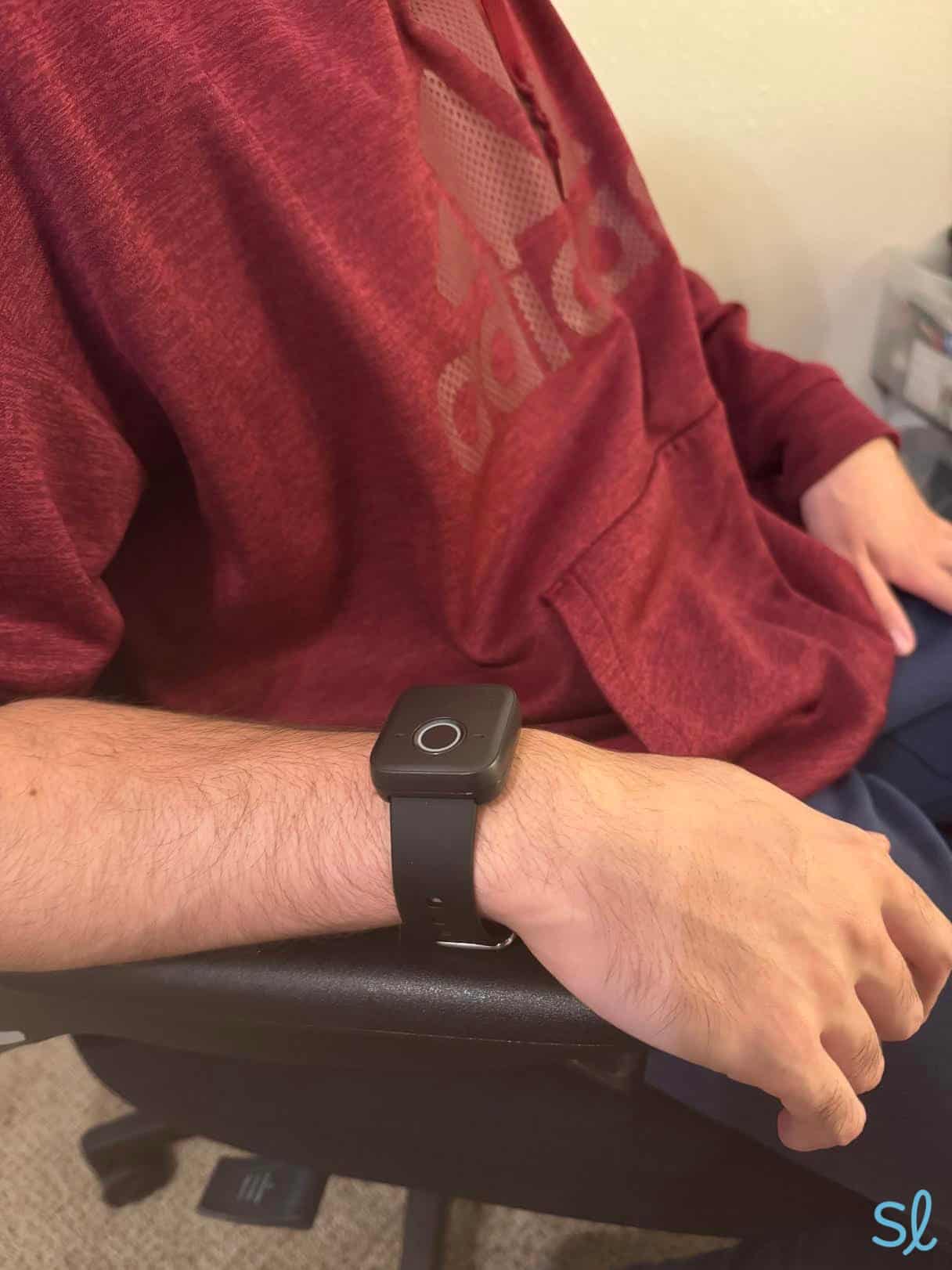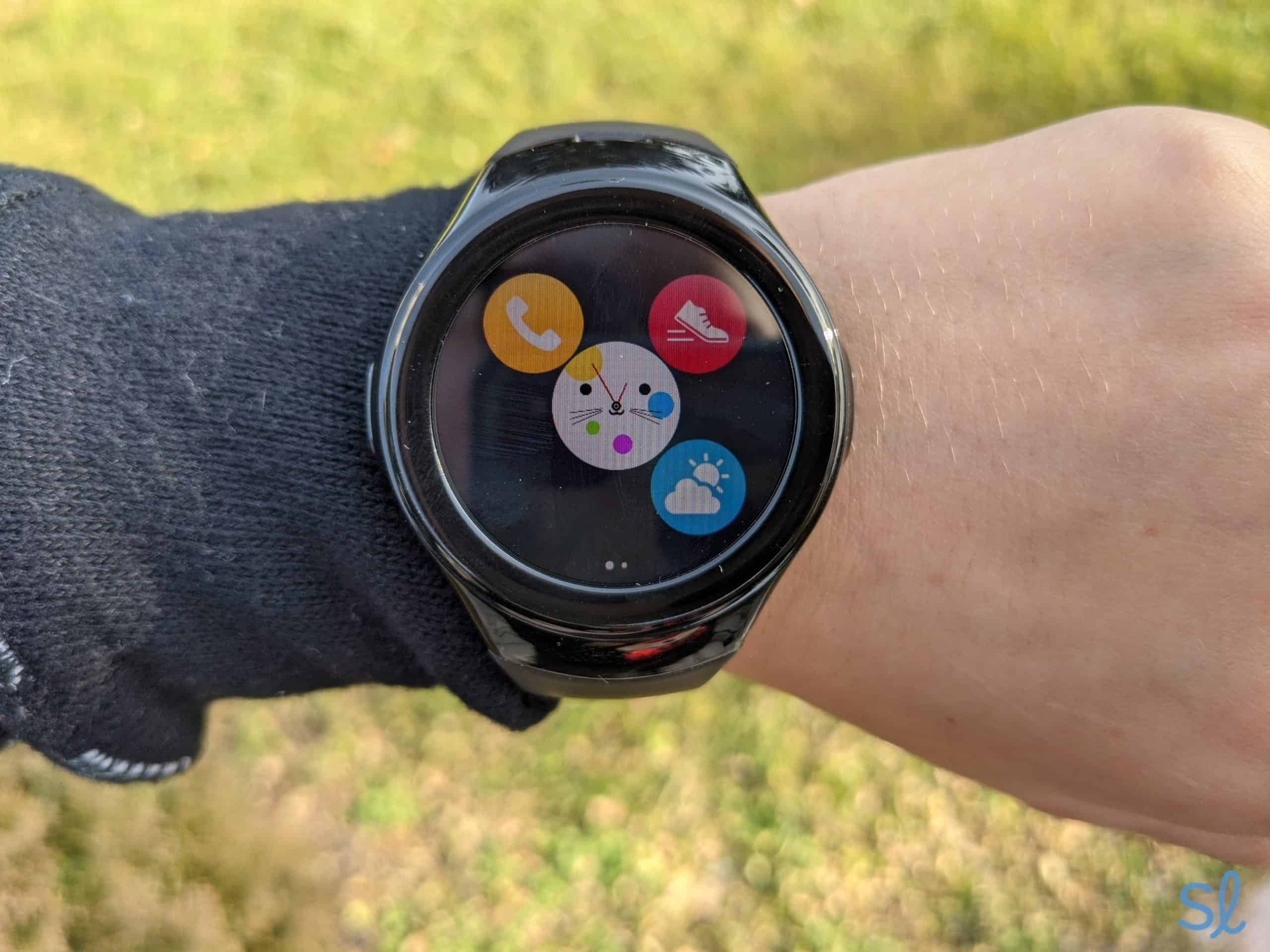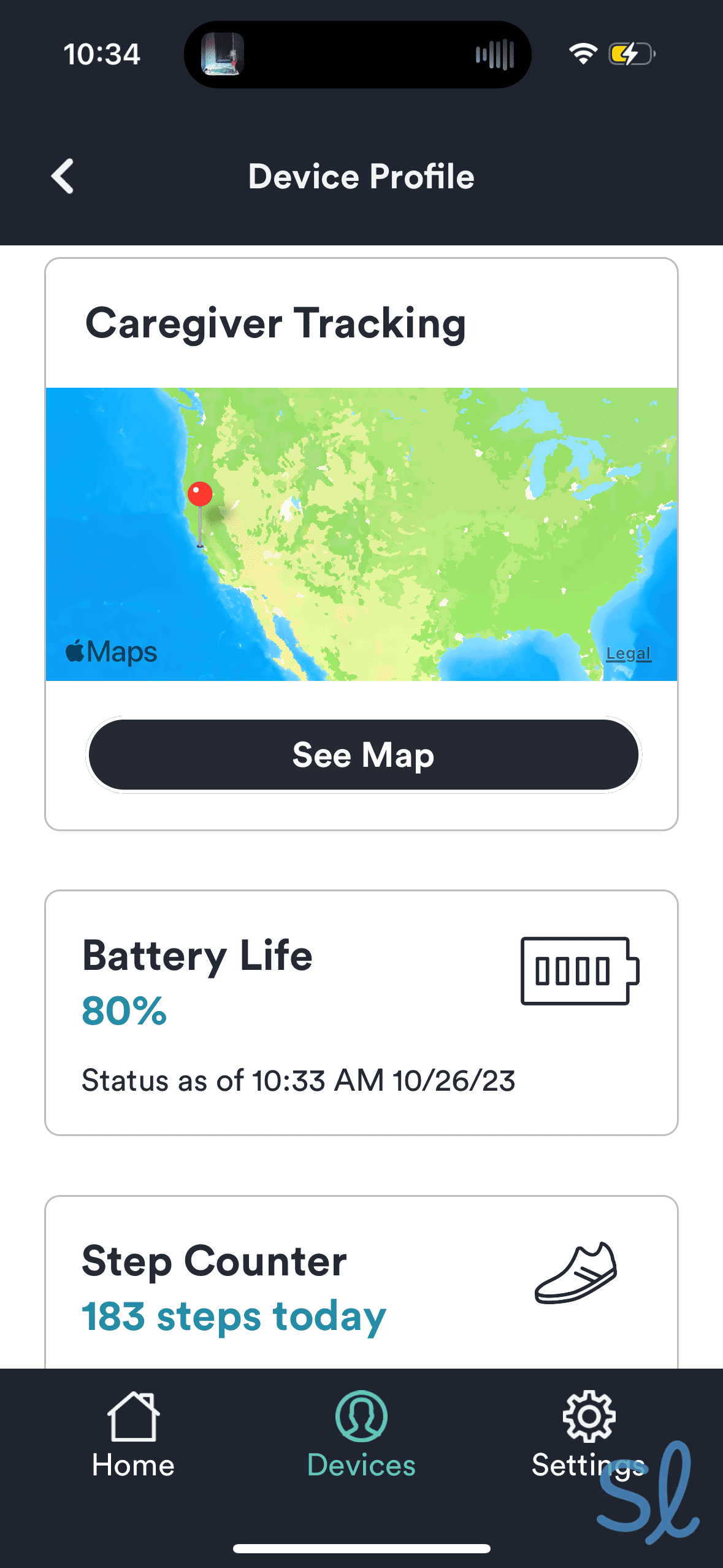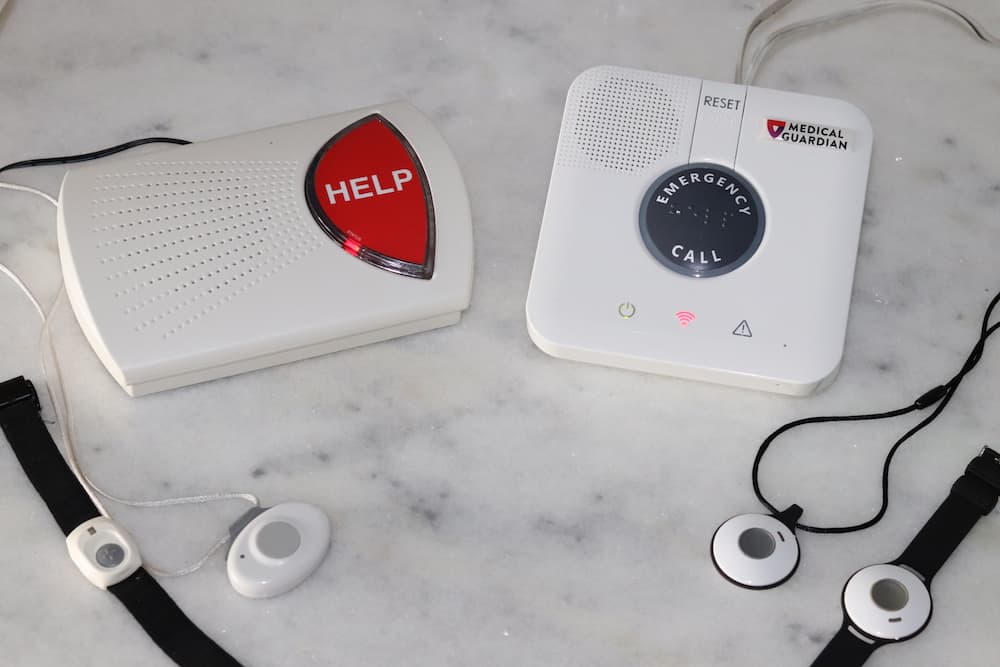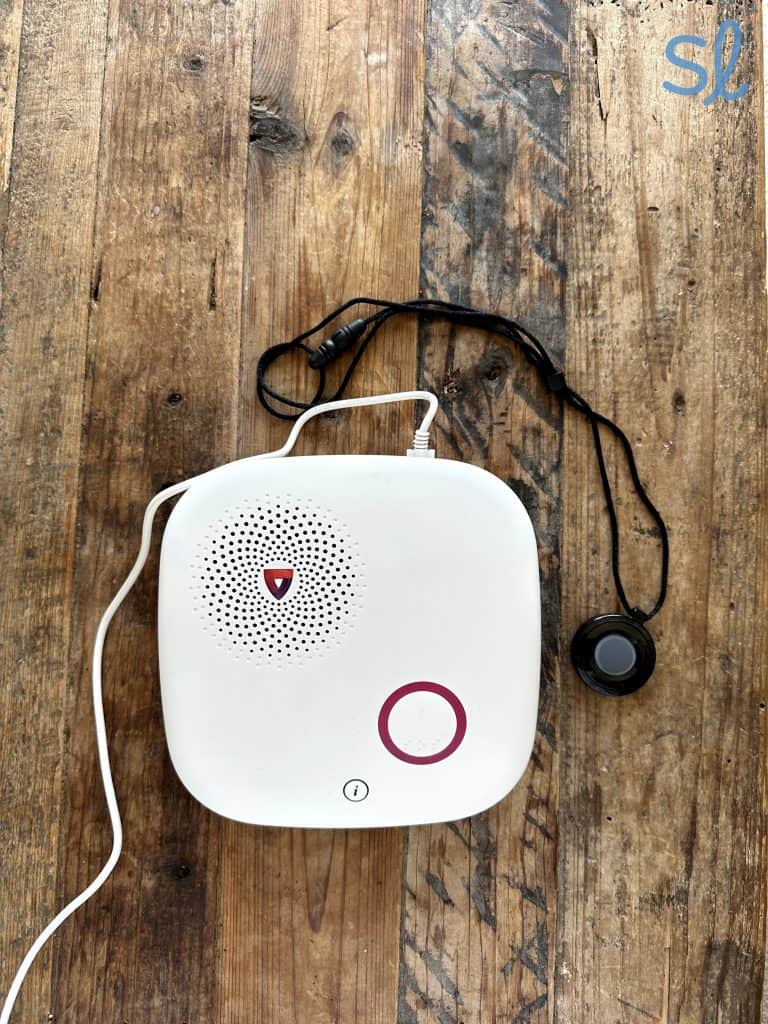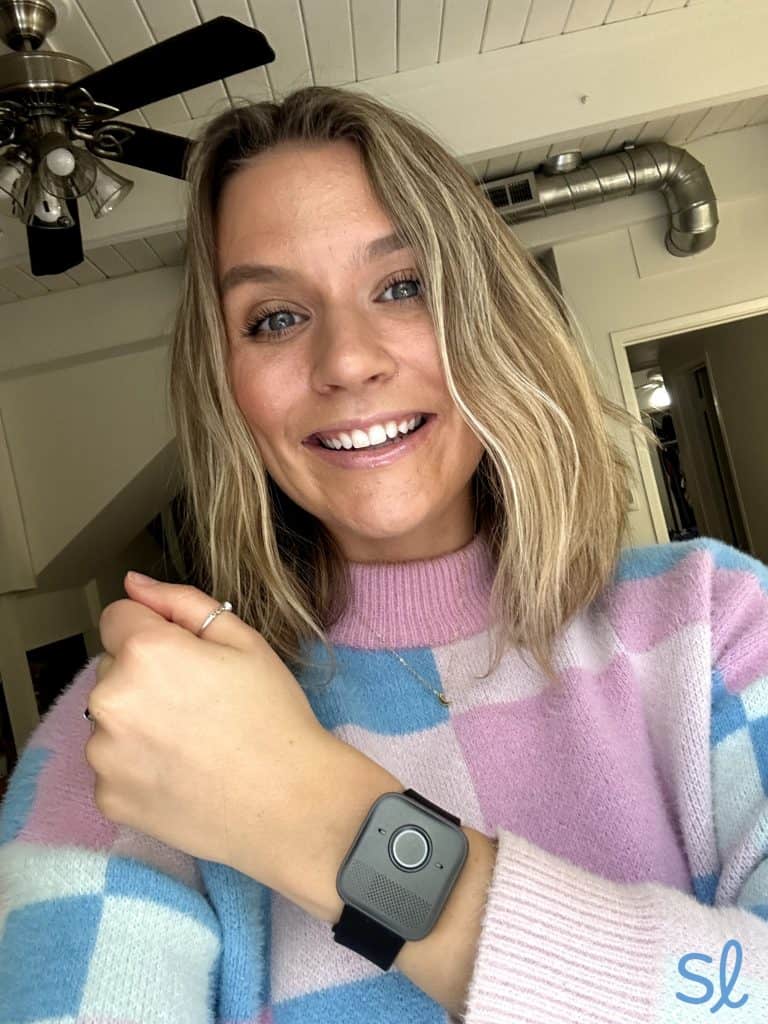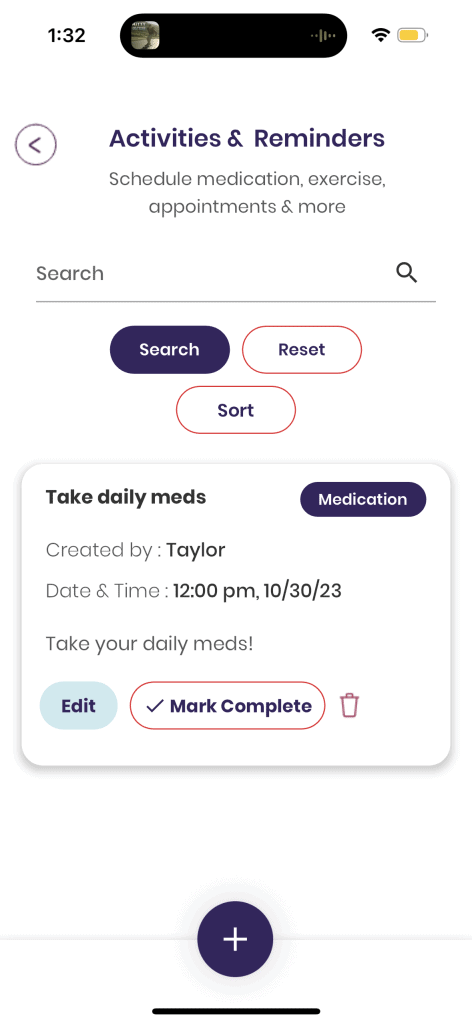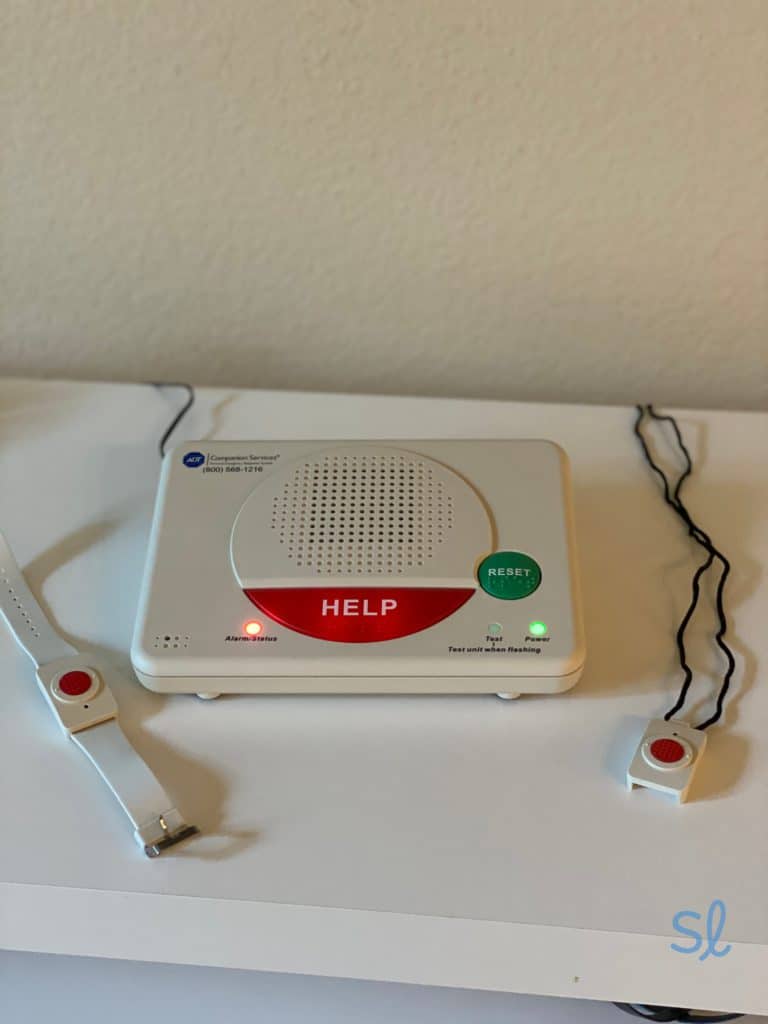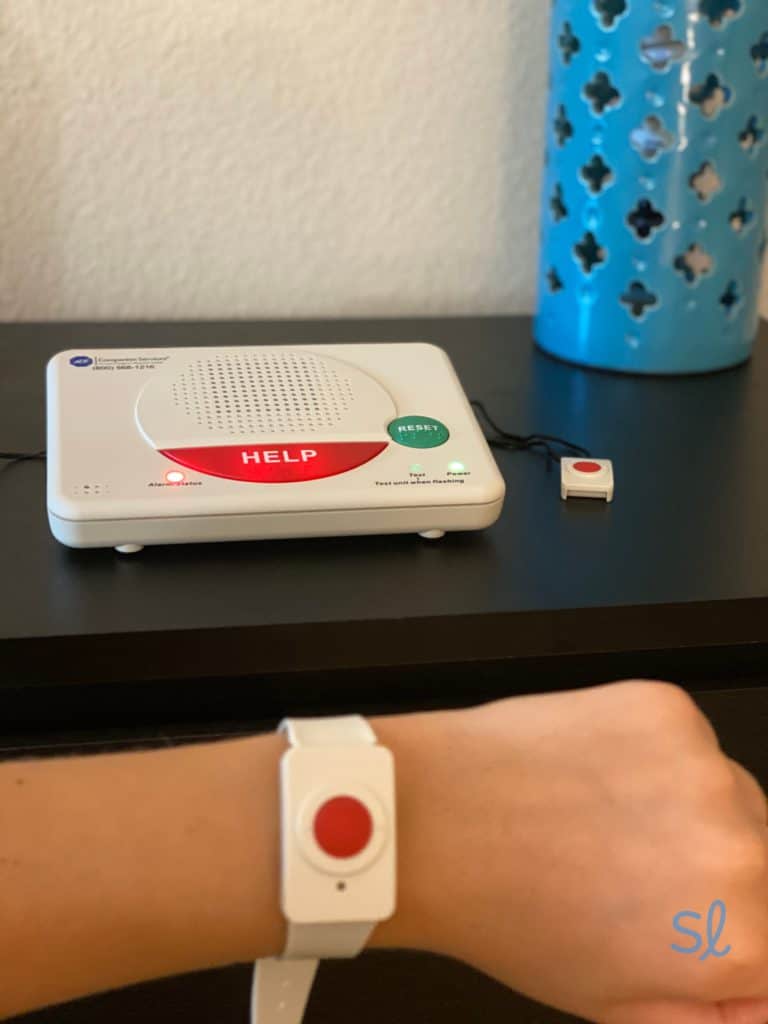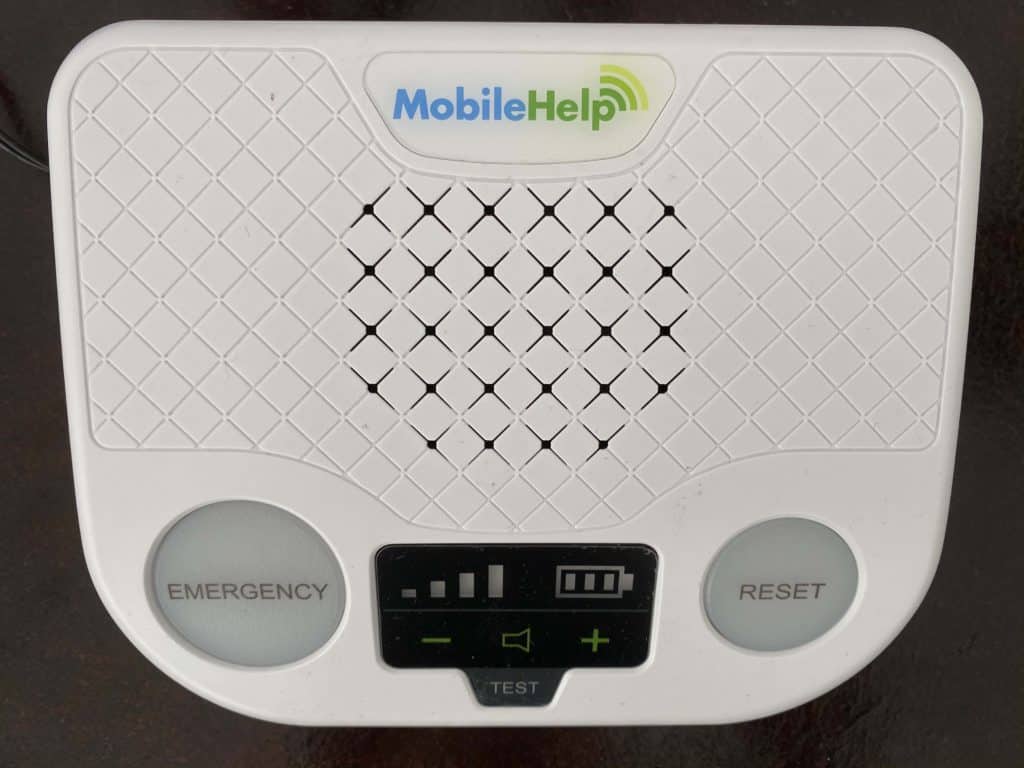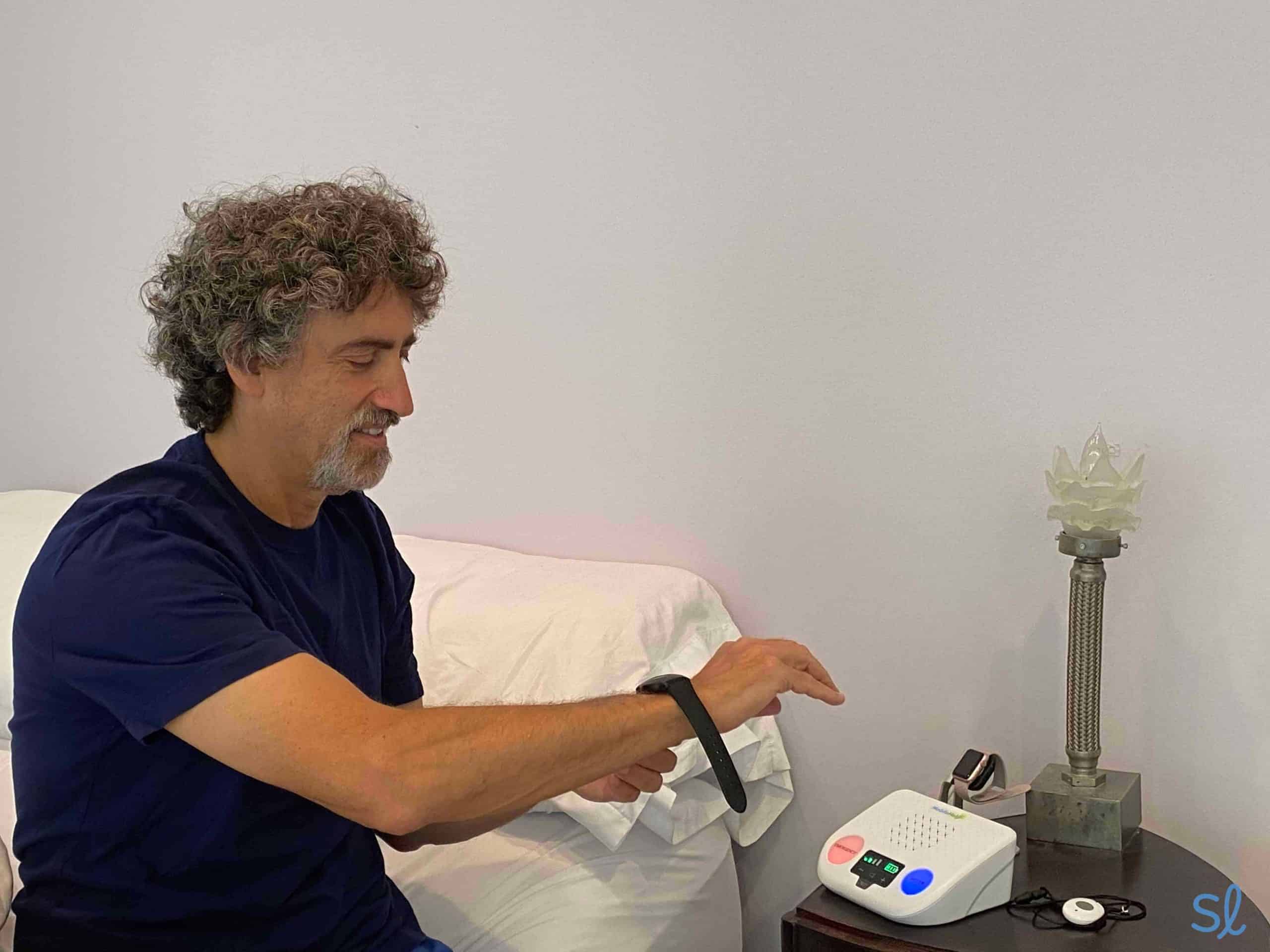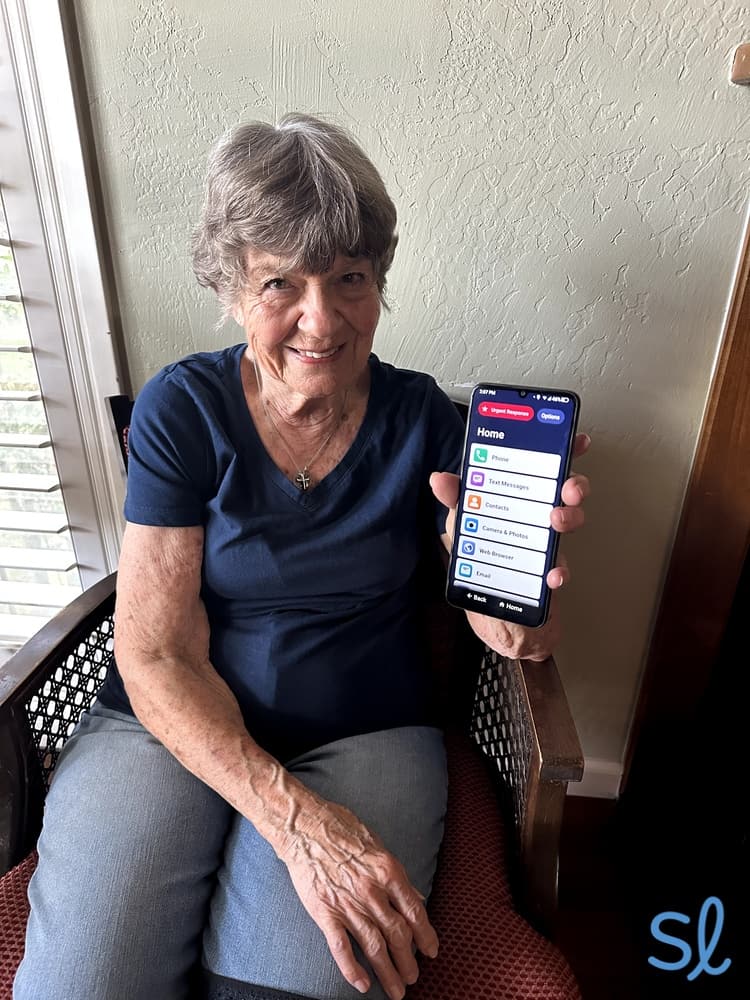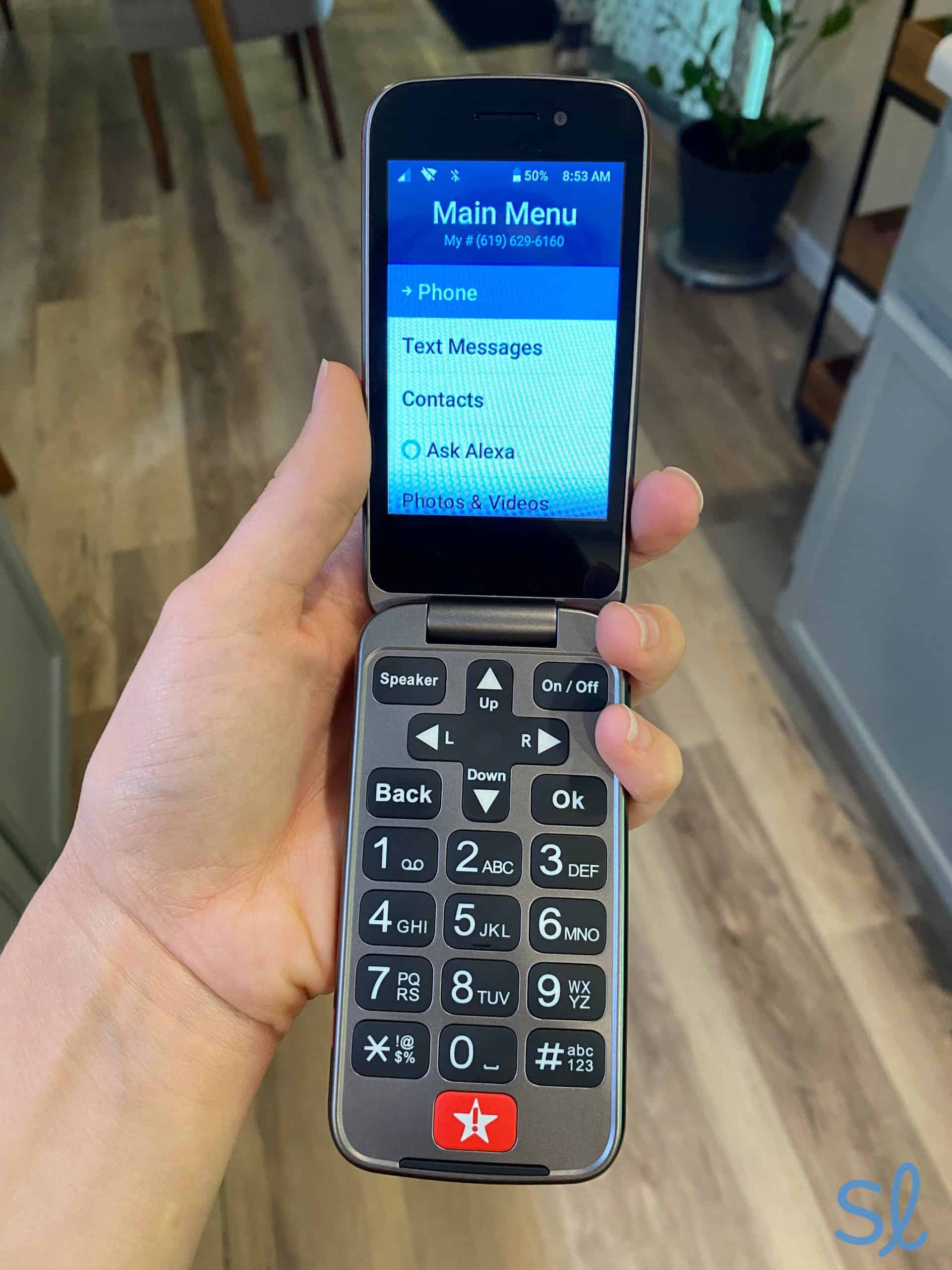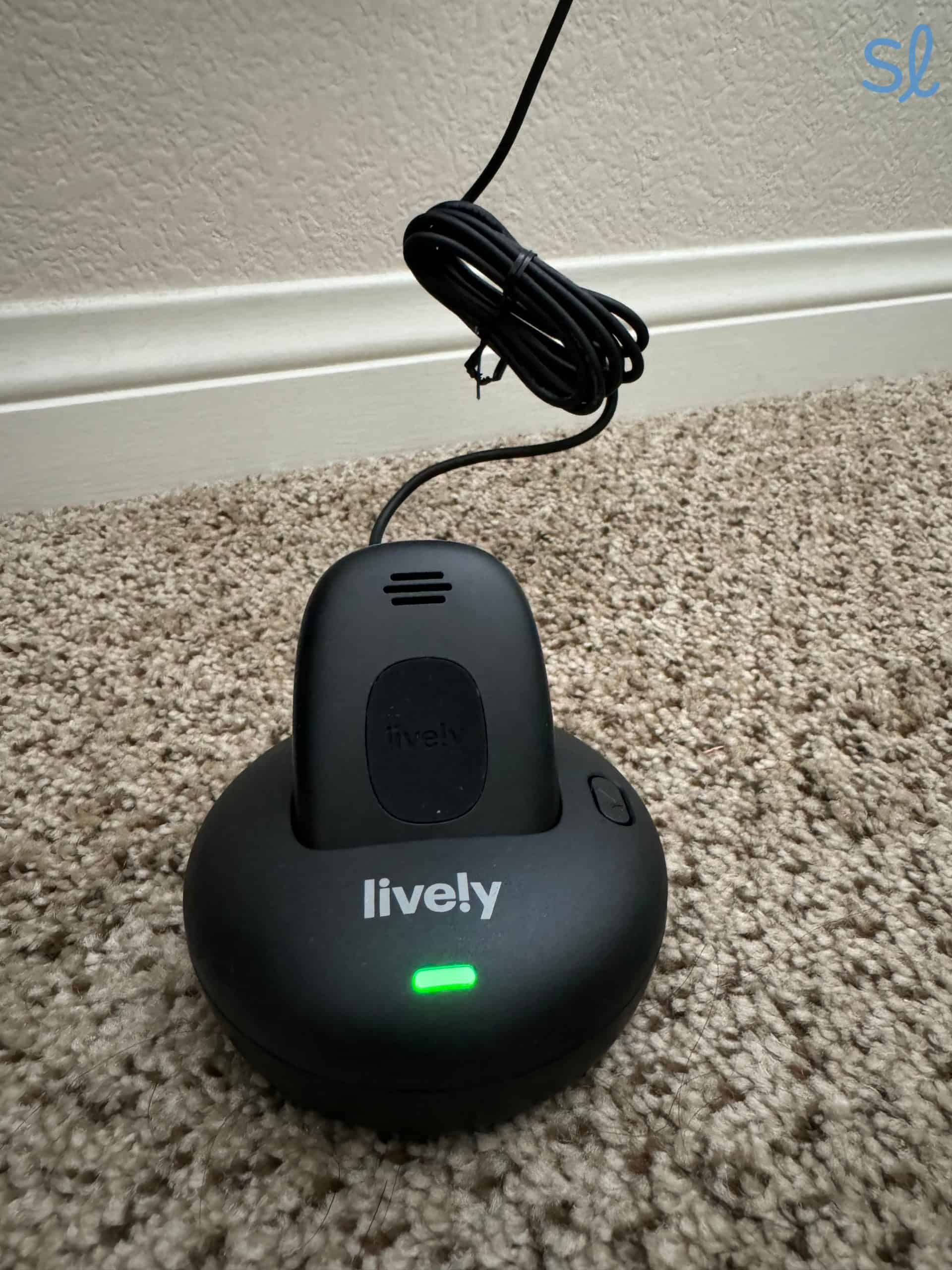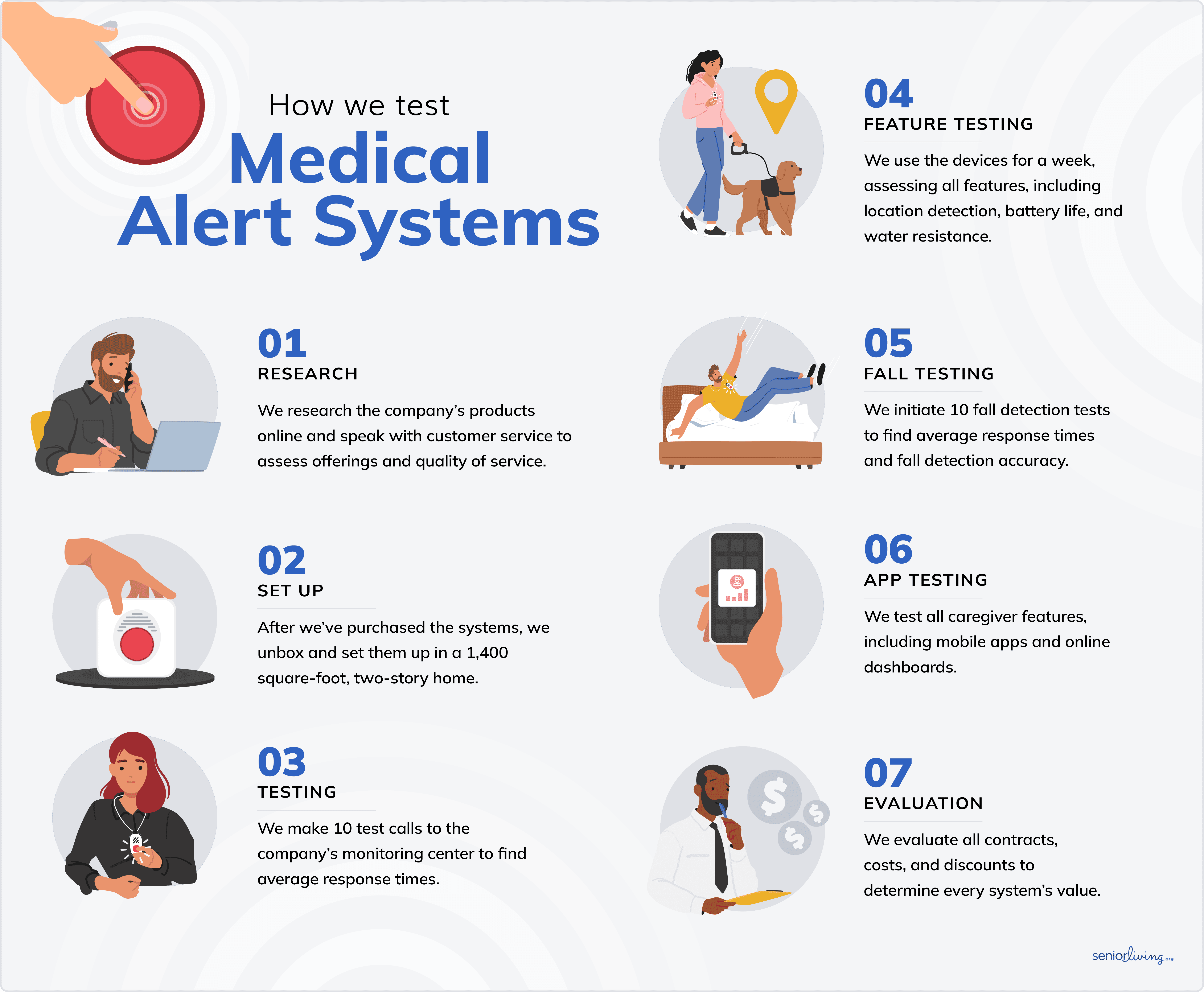Best Medical Alert Systems of 2025, Reviewed and Tested by Tech Experts
Bay Alarm Medical is our top choice for medical alert systems thanks to their affordable prices, caregiver mobile app, and robust features.
SeniorLiving.org is supported by commissions from providers listed on our site. Read our Editorial Guidelines
- Prices start at $24.95 per month
- Mobile app for caregivers and family
- Unique features: Affordable bundles to help you save
- Prices start at $27.95 per month
- MyGuardian app for caregivers
- Unique features: High-tech, sleek systems
- Prices start at $31.99 per month
- No mobile app for caregivers
- Unique features: Lifetime warranty
- Prices start at $24.95 per month
- Automated text message alerts for caregivers
- Unique features: Systems designed for two users
- Combines mobile phone with a medical alert system
- Jitterbug phones are compatible with hearing aid
- Simple Urgent Response button for immediate connection with an operator
After hours of hands-on testing and research, our medical alert experts chose the best medical alert systems for seniors.
After hours of hands-on testing and research, our medical alert experts chose the best medical alert systems for seniors.
Learn MoreContents
Our senior tech experts spent hundreds of hours testing and comparing dozens of the latest medical alert systems to help you find the one that’s right for your needs and budget. We also consulted with Linda Schlenker, home health occupational therapist and home safety expert, on her top picks and advice. We evaluated each system based on important criteria like pricing and value, features for caregivers, response times, usability, and more.
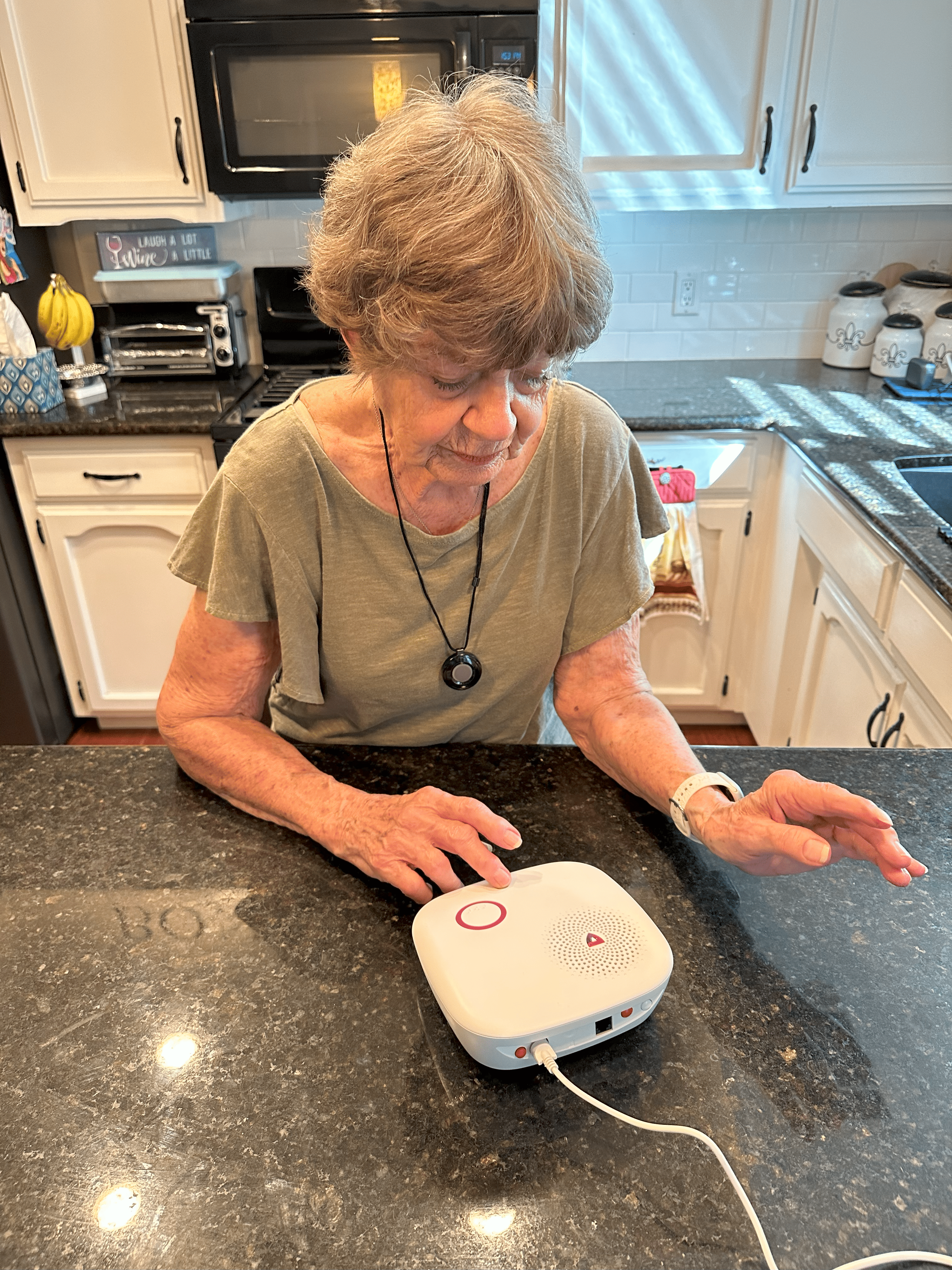
Testing out Medical Guardian's MGHome Cellular system

Our Top Recommendations
After all of our research and testing, three medical alert companies came out on top:
- Bay Alarm Medical: Bay Alarm Medical offers the best value with affordable rates starting at $24.95 per month. But don’t let the price tag fool you; the company doesn’t skimp on quality. We’re also big fans of Bay Alarm’s mobile app, which has useful features for users and caregivers.
- Medical Guardian: Medical Guardian stays ahead of the curve with modern tech. The company is always one of the first companies to launch new alert systems in unique styles. From streamlined in-home systems to smartwatches and discreet wrist-worn systems, Medical Guardian offers something for everyone.
- ADT: ADT offers excellent 24/7 monitoring from a tried and true brand that has built a top-notch reputation for decades. We are big fans of the quality of their response agents.
Why You Should Trust Us
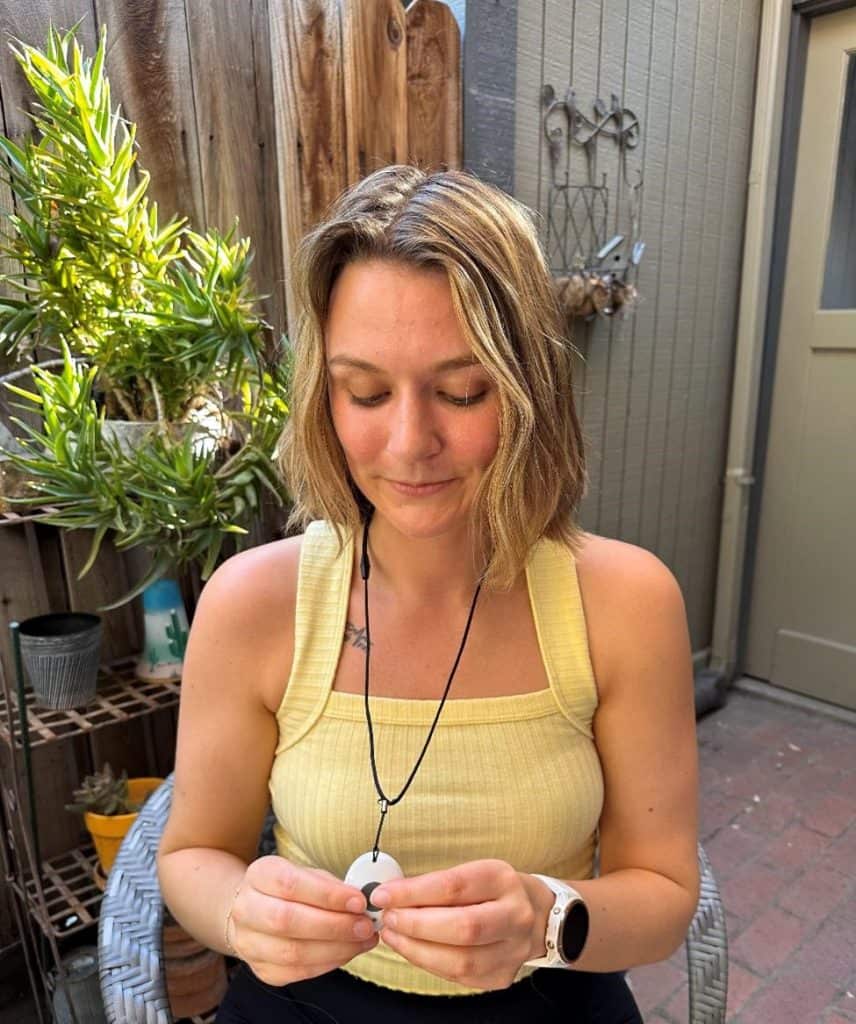
Testing out a Medical Guardian help pendant
Since 2014, we have purchased, used, and tested every medical alert system on the market. We unbox the systems, set them up ourselves, and wear them around our homes, at the grocery store, and even while hiking local trails. When a system claims to be waterproof, we test that too! From there, we select the best medical alert systems, evaluating them for quality, reliability, speed of emergency responses, price, aesthetics, extra perks, and value.
To ensure everything we publish is expert vetted, occupational therapist Linda Schlenker lends her expertise to our content. Linda has over three decades of experience advising seniors and caregivers on how to age in place safely with products like medical alert systems. We also recruit older adults to try out these systems and get their feedback whenever possible.
To learn more, head to our methodology section. And be sure to see all of our medical alert system review videos.
The Best Medical Alert Systems Compared

Bay Alarm Medical
|

Medical Guardian
|

ADT Health
|

MobileHelp
|

Lively
|
|
|---|---|---|---|---|---|
| Rating | 5 | 4.8 | 4 | 4.2 | 4 |
| Prices starting at | $24.95 per month | $27.95 per month | $31.99 per month | $24.95 per month | $19.99 per month |
| Fall detection | $10 per month | $10 per month | $10 per month | $11 per month | $10 per month |
| Connection type | Landline or cellular | Landline or cellular | Landline or cellular | Landline or cellular | Cellular |
| GPS equipment | Yes | Yes | Yes | Yes | Yes |
| In-home coverage range | Up to 1,000 feet | Up to 1,300 feet | Up to 600 feet | Up to 1,400 feet | No in-home systems |
| Warranty | Lifetime | Limited | Lifetime | Limited lifetime | 1 year |
| Spouse monitoring | Yes | No | No | Yes | No |
| Average Response Times | 10-20 seconds | 15-60 seconds | 10-20 seconds | 25-30 seconds | 10-15 seconds |
-
1. Bay Alarm Medical - Best value
 View Packages Links to Bay Alarm Medical
View Packages Links to Bay Alarm MedicalWhat we like most
- Prices start at $24.95 per month
- Mobile app for caregivers and family
- Unique features: Affordable bundles to help you save
 Bay Alarm MedicalView Packages Links to Bay Alarm MedicalOverview:
Bay Alarm MedicalView Packages Links to Bay Alarm MedicalOverview:Why They Made the Cut
Wearing Bay Alarm Medical's SOS Micro system
Bay Alarm Medical’s prices start at $24.95 per month. The prices for at-home and on-the-go options are less expensive than much of the competition, including Medical Guardian. They also come packed with top-of-the-line features. That means you get the most bang for your buck. And, if you want more than one system, you can bundle two for even bigger savings.
Current Deal: Bay Alarm Medical is currently offering 50 percent off, free shipping, and one free month of service on select plans. Check out our Bay Alarm Medical pricing guide to learn more about the latest costs and deals.
Some providers offer in-home systems for the same price, like MobileHelp. However, Bay Alarm Medical’s inexpensive on-the-go prices, bundles, and caregiver app make it our pick for best value. Plus, the provider offers seasonal discounts.
Pros & Cons:Pros About Bay Alarm Medical
- Inexpensive systems that work well with most budgets
- Excellent location tracking that allowed me to know my grandma’s precise location at all times
- Sleek, lightweight equipment that was easy to carry on the go
- Price lock guarantee
- No hidden fees
- 30-day risk-free trial
- Customizable packages to suit your needs
- Bundling options and seasonal discounts
Cons About Bay Alarm Medical
- Equipment fees with some plans
- Home equipment is a bit clunky
- Monthly fee for warranty
- SOS Mobile is not very discreet
Our Hands-on Testing:Testing and Response Times
Bay Alarm Medical’s systems are simple to install and operate. SOS Micro is a sleek, small, and lightweight system worn on the wrist. When trying out the system, we felt it was easy to carry around. And, it was much lighter than MobileHelp’s systems.
The SOS Smartwatch is one of our favorite systems for active seniors looking for a discreet safety device. We could track our steps, set daily goals, and connect to the 24/7 monitoring center. You don’t need a smartphone or any internet-connected device to use it. This is similar to other medical alert watches, including the Medical Guardian’s MGMove system.
» Further Reading: Bay Alarm Medical review
Placing a test call took only 10 seconds. That’s five seconds faster than Medical Guardian’s average response times. We simply pressed the watch’s help button, which connected us to an agent. Then, we informed her that we were testing the watch. She confirmed it was a test and verified our identity.
Bay Alarm Medical SOS Smartwatch
Response times for the SOS Home, Bay Alarm Medical’s in-home system, were quick, too! We were connected to an operator in about 20 seconds. Bay Alarm Medical advertises that a response takes up to 45 seconds, so this claim was accurate. However, we were disappointed that you can’t add automatic fall detection to the landline version of SOS Home. Most other providers, including Medical Guardian and ADT Health, offer fall detection for landline systems.
Expert InsightsFrom Linda Schlenker, M.S., M.A., O.T.RFall detection is important. I have worked with people who had a medical emergency, such as a cardiac event that caused a fall, and they were unable to push the button on their medical alert system. The fall detection feature saved their lives.Features for Caregivers
Bay Alarm Medical offers a mobile app packed with caregiver features. We could track our device, view the battery life and signal strength, and ring the device if lost.
The ability to track your loved one’s location is excellent, especially if they have dementia and are prone to wandering. We wore the SOS Smartwatch system at the house, while running errands, and on a walk. Using the mobile app, we could see the system’s exact location on a map. If there was an issue, we could easily locate the user.
Navigating Bay Alarm Medical's companion mobile app
The mobile app also lets you set up an emergency plan. It features everything that first responders would need during an emergency, including the user’s emergency contacts, home entry information, and medical history. If a fall is detected, the response agent will have all of this information on hand to provide help quickly. Many other providers have a similar emergency response plan, too.
Things to Keep in Mind
As we've mentioned, Bay Alarm Medical offers affordable prices, great value, and systems for different lifestyles. However, there are a few things about the company’s equipment that we didn’t love.
» You Might Like: Best mobile medical alert systems
For example, SOS Home’s base unit is a bit of an eyesore, and it stood out on our kitchen counter. This is pretty typical with in-home systems, but some companies have started offering sleek equipment. For instance, Medical Guardian’s MGHome Cellular is streamlined and modern. However, with Bay Alarm Medical’s prices starting at just $24.95 per month, it might be worth the appearance.
Bay Alarm Medical and Medical Guardian in-home systems
The Product Lineup and Pricing
Product name Prices starting at Connection type Designed for Fall detection SOS Home $24.95 to $39.95 per month Landline or Cellular (AT&T and Verizon) In-home use Included with top-tier package SOS Micro $29.95 to $54.95 per month (plus one-time $149 equipment fee) Cellular (AT&Tand Verizon) On-the-go use Included with mid-tier Micro and Micro 360° Bundle SOS Smartwatch $39.95 to $64.95 per month (plus one-time $199 equipment fee) Cellular (AT&Tand Verizon) Active, on-the-go users Included with top-tier package and bundle SOS All-In-One 2 $34.95 to $44.95 per month
(plus one-time $149 equipment fee)Landline + Cellular (AT&Tand Verizon) connection In-home and On-the-go use Included with top-tier bundle -
2. Medical Guardian - Best high-tech systems
 View Packages Links to Medical Guardian
View Packages Links to Medical GuardianWhat we like most
- Prices start at $27.95 per month
- MyGuardian app for caregivers
- Unique features: High-tech, sleek systems
 Medical GuardianView Packages Links to Medical GuardianOverview:
Medical GuardianView Packages Links to Medical GuardianOverview:Why They Made the Cut
Testing out Medical Guardian's MGHome Cellular system
Medical Guardian is always one step ahead when it comes to high-tech, customizable features. It offers everything from discreet on-the-go systems to the MyGuardian mobile app and desktop portal. Medical Guardian adds flair and versatility that competitors like ADT Health and MobileHelp don’t offer.
Expert InsightsFrom Linda Schlenker, M.S., M.A., O.T.RMedical Guardian is known for its exceptional customer service. My patients have mentioned that they weren’t pressured to purchase or sign long-term contracts like they were with other companies. They also mentioned that the company was good at explaining all the options, and they received their units quickly.Whether you’re looking for a simple medical alert system or one with advanced features, Medical Guardian offers five packages to meet your needs. We tested all the essential features, including fall detection, water-resistant help buttons, and at-home and on-the-go systems. I found that Medical Guardian offers deals throughout the year, so be sure to keep an eye on their website!
Buying Tip: Medical Guardian packages typically come with free shipping and a free lockbox on new annual subscriptions. To learn more, read our Medical Guardian pricing guide to learn more about how you can save.
Pros & Cons:Pros About Medical Guardian
- High-tech mobile systems
- Customizable features and add-ons like fall detection
- Large in-home coverage range
- No hidden fees
- U.S.-based monitoring center
- Water-resistant technology
- Customer portal and mobile app for activity tracking and communication
Cons About Medical Guardian
- Slow response time on initial MGMini test
- No free trial
- Pricier premium systems
- Cellular systems require AT&T or Verizon*
Our Hands-on Testing:Testing and Response Times
We started the MGHome Cellular system setup by plugging it into an outlet. Then, we pressed the red button on the back of the base unit. A button on the front of the system turned green to indicate a strong signal, and a voice said, “Device ready.” We put on the help pendant and the setup was complete.
Medical Guardian’s response times are very fast. An operator answered our calls for the MGHome Cellular, MGMini, and MGMove in about 15 seconds — just five seconds slower than our results for Bay Alarm Medical’s mobile systems.
Testing out Medical Guardian's MGMini Lite
MGMini Lite, the company’s latest on-the-go system, was a little slower. It took about one minute for an operator to answer after we pressed the emergency button. This is still a reasonable amount of time, but in a real emergency, every second counts. We were in a new location when we tested out MGMini, and we might not have had the best cell reception. Similar to the other cellular systems on our list, you will need a strong cellular connection to use Medical Guardian’s mobile options.
» Want to Learn More? Medical Guardian review
During testing, we found out that the MGMove smartwatch system offers fall detection. Medical Guardian’s earlier smartwatch model, Freedom Guardian, didn’t offer fall detection, so this is a step up! Watch our video below to learn more about this system for active users.

Features for Caregivers
The best feature for caregivers is the MyGuardian portal and mobile app. If you manage the billing on behalf of your parent or grandparent, the app makes it easy to pay for the Medical Guardian subscription. You can also update health and safety information to assist emergency response agents.
Setting reminders in Medical Guardian's MyGuardian mobile app
The app has a variety of useful features. We could check the system’s location, status, connection quality, battery level, and alert history. Similar to Bay Alarm Medical’s app, we could also update our health and safety information, including our medical history, emergency contacts, and household information.
We could also set reminders and calendar events in the app, which is a unique feature. If your loved one has a hard time keeping track of appointments or taking medications, you can set alerts in the app. We set a reminder to take our medications. The alert was audibly announced through the MGHome Cellular base unit at the time we designated.
» Learn About: Best medical alert apps
Things to Keep in Mind
Medical Guardian’s fall detection pendants are very sensitive. When we tested our fall detection pendant, we experienced multiple false alarms throughout the week.
» Related Reading: Best medical alert systems with fall detection
Sometimes, when we bent over or set the pendant down on the counter, the system recorded a fall and connected to the emergency response center. Luckily, we could easily cancel the call by pressing the button on the mobile base unit.
However, on one occasion, we set the pendant down in the kitchen and walked to a room on the other side of the house. We didn’t realize that the system had recorded a fall, and we didn’t hear the response agent trying to speak to us through the system’s base unit in the kitchen. To our surprise, first responders showed up at our front door shortly afterward asking if everything was OK.
While we appreciate that Medical Guardian sent help when they couldn’t get in touch with us, it isn’t something you want to happen regularly. Now, we keep our system’s base unit nearby so we can quickly cancel any false alarms.
The Product Lineup and Pricing
Product name Monthly prices starting at Connection type Designed for Fall detection MGClassic $31.95 per month Landline At-home use $10 per month MGHome Cellular $38.95 per month (plus one-time $149.95 equipment fee) LTE, Wi-Fi At-home use $10 per month MGMini $39.95 per month (plus one-time $149.95 equipment fee) Wi-Fi, GPS, 4G Discreet on-the-go use (all-in-one system) $10 per month MGMini Lite $46.95 per month (plus one-time $149.95 equipment fee) Wi-Fi, GPS, 4G On-the-go use $10 per month MGMove $42.95 per month (plus one-time $199.95 equipment fee) GPS, 4G On-the-go smartwatch $10 per month -
3. ADT Health - Best monitoring center
 See Pricing Links to ADT Health
See Pricing Links to ADT HealthWhat we like most
- Prices start at $31.99 per month
- No mobile app for caregivers
- Unique features: Lifetime warranty
 ADT HealthSee Pricing Links to ADT HealthOverview:
ADT HealthSee Pricing Links to ADT HealthOverview:Why They Made the Cut
ADT Health's Medical Alert Basic system
ADT is best known for its 150-year history of providing reliable, innovative home security. The company has applied that same standard of excellence to its medical alert systems to protect seniors and their families.
ADT Health doesn’t skimp on service. Every person we interacted with during the testing process knew exactly what to do and responded to all of our questions quickly.
We were most impressed with the professionalism of their monitoring centers. ADT’s Emergency Response Monitoring Center is U.S.-based and company-owned. It’s also company-operated and monitored 24/7 by senior-sensitivity-trained professionals. In the middle of an emergency, older adults can rest assured they will speak with a top-trained ADT professional, just as we did during testing.
» Further Reading: ADT Health review
ADT has three systems, including on-the-go and in-home models, plus add-on features like fall detection and home temperature monitoring. If you already have an ADT home security system, make sure you mention it to your customer representative, as you may be eligible for a discount on an ADT medical alert system.
Pros & Cons:Pros About ADT Health
- Senior-sensitivity-trained monitoring professionals who know how to keep you calm in an emergency
- Seasonal discounts
- Price lock guarantee
- Free two-day shipping
- Excellent reputation
- Home temperature monitoring
- Alerts caregivers during an emergency
Cons About ADT Health
- Limited system options
- Must live in AT&T coverage area to use some systems
- No fall detection available with Medical Alert Basic
- Customers with an existing ADT home security system might not be eligible for a medical system discount
Our Hands-on Testing:Testing and Response Times
We tested all three of ADT Health’s medical alert systems, which include Medical Alert Basic (landline home system), Medical Alert Plus (cellular home system), and On-The-Go.
The setup was easy and only took a few minutes for each system. Like Medical Guardian and MobileHelp, we plugged in the in-home base stations and charged the mobile unit. The responses we got from the ADT emergency monitoring center were phenomenal. On average, an agent responded in as little as 10 seconds. They also showed compassion and professionalism with every interaction.
The devices have very powerful speakers that make it easy for those with hearing loss to hear the agent on the line. The voice prompts of the Medical Alert Plus base unit were so loud that they startled us the first time we heard them. Luckily, we found that the system had an adjustable volume control, so we could turn it down.
» Also Check Out: Best medical alert systems for seniors with hearing loss
We also had a great experience with the On-The-Go system. It held a decent signal while we drove around town. Similar to MobileHelp, the system is dependent on AT&T coverage, so it won’t be right for those who live in areas with spotty AT&T service.
Testing out ADT Health's Medical Alert Basic system
Features for Caregivers
While ADT Health can send caregivers mobile alerts in an emergency, it doesn’t offer a companion app or portal. We wish there were more features to loop caregivers into the health and well-being of their loved ones. Medical Guardian and Bay Alarm Medical have really upped the game with caregiver features, so hopefully we’ll see some upgrades from ADT in the future.
Things to Keep in Mind
ADT’s product lineup is pretty limited, with two in-home units and one mobile unit. These systems haven’t changed or advanced much in terms of tech or appearance over the years.
You won’t find any high-tech systems like a smartwatch or sleek in-home system here. ADT Health doesn’t offer a mobile app with GPS tracking or activity monitoring either, which is a drawback for loved ones who want to stay in the loop. But if your main concern is the quality of service and you’re not fussed about aesthetics or the latest features, ADT Health is a great choice.
Product Lineup and Pricing
Product name Prices starting at Connection type Designed for Fall detection Medical Alert Basic $31.99 per month Landline In-home use Not available Medical Alert Plus $39.99 per month Cellular (AT&T) In-home use $11 per month On-The-Go $41.99 per month Cellular (AT&T) On-the-go use $11 per month -
4. MobileHelp - Best two-for-one systems
See Pricing Links to MobileHelpWhat we like most
- Prices start at $24.95 per month
- Automated text message alerts for caregivers
- Unique features: Systems designed for two users
MobileHelpSee Pricing Links to MobileHelpOverview:Why They Made the Cut
Testing out MobileHelp Classic
MobileHelp made this list thanks to their systems designed for two users. The company offers a versatile lineup of systems designed for at-home and on-the-go use, whether you need protection for just yourself or for a partner as well.
While many companies charge an extra fee or require you to purchase two separate systems to add a spouse, MobileHelp offers a few two-in-one systems. We found the systems were easy to test, as two of us could use the two-in-one system at the same time!
Current Deal: MobileHelp is currently offering one month free and 50 percent off fall detection! Visit our MobileHelp pricing guide to learn more about this provider’s monthly rates and packages.
Pros & Cons:Pros About MobileHelp
- Excellent two-in-one system for couples
- Versatile product lineup
- 24/7 U.S.-based professional monitoring center
- Large in-home coverage range
- Free shipping on all packages
- Two help buttons with most systems
Cons About MobileHelp
- Smartwatch system discontinued
- Cellular systems rely on AT&T service
- Monitoring center is not company-owned
- No free trial
Our Hands-on Testing:Testing and Response Times
Setup for the Home Duo Bundle, which comes with an in-home system and on-the-go unit, was simple. For the in-home unit, we just plugged in the base station and put on the wearable help button, which is waterproof. Then, we plugged the mobile unit’s charger into the wall and set the unit on the charger. It was fully charged in a few hours. We recorded response times between 25 and 30 seconds, which is slower than the other providers on our list, but still fairly fast.
Expert InsightsFrom Linda Schlenker, M.S., M.A., O.T.RMedical alert devices have really evolved with features that are critical for safety. The two most important features are waterproof equipment and fall detection. I have worked with many people who fell and either couldn't reach their button or became unconscious. In addition, one of the highest-risk activities anyone will do in their home is exiting their shower, which is the one place they will not have their phoneWe were most impressed with the system’s in-home coverage range. The in-home unit features a range of 1,400 feet, perfect for larger houses. We placed a test call at one end of the house using our help button, while the system’s base station was on the opposite end of the house. The system still detected the call and connected us to an emergency response agent.
Our Editor Jeff Hoyt Testing Out MobileHelp
Features for Caregivers
MobileHelp Connect is the company’s one-stop portal for caregiver features. We tested the standard version (which is free), and we received automatic alerts whenever we pressed the system’s emergency alert button. It also provided GPS-based location detection to track the system’s movement.
» Dive Deeper: 2025 MobileHelp review
The MobileHelp Connect portal also allows you to upload important health information in the MobileVitals section. However, some features are hidden behind a paywall. Other providers like Medical Guardian and Bay Alarm Medical offer all app features at no extra cost, so we were disappointed in these additional fees.
Things to Keep in Mind
A lot of MobileHelp’s equipment could use some updating. The company’s in-home systems are both pretty bulky, similar to Bay Alarm Medical. MobileHelp could also simplify its offerings.
The company has six different systems, which is more than any of the other companies on our list. While we appreciate these options for different lifestyles and budgets, it can be hard to choose the right system for you.We had a hard time distinguishing some of the systems, including the Solo and Micro, which are very similar. Still, MobileHelp has an online quiz to help you pick a system, and the customer service team can answer questions as you shop.
The Product Lineup and Pricing
Product name Prices starting at Connection type Designed for Fall detection Classic Cellular $24.95 per month Cellular (AT&T) At-home use $5.50 per month Classic Landline $24.95 per month Landline At-home use Not available Micro $34.95 per month Cellular (AT&T) Discreet on-the-go use for one user $5.50 per month Home Duo Bundle $44.95 per month Cellular (AT&T) At-home & on-the-go for one or two users $5.50 per month per person Mobile Duo Bundle $49.95 per month Cellular (AT&T) On-the-go for two users $5.50 per month per person Solo $34.95 per month Cellular (AT&T) On-the-go for one user $5.50 per month -
5. Lively - Best mobile phone options
See Pricing Links to LivelyWhat we like most
- Combines mobile phone with a medical alert system
- Jitterbug phones are compatible with hearing aid
- Simple Urgent Response button for immediate connection with an operator
LivelySee Pricing Links to LivelyOverview:Why They Made the Cut
My grandma trying out the Jitterbug Smart4
We often hear seniors say they don’t want to wear a medical alert device everywhere they go. Lively’s senior-friendly phones are a practical solution. The phones feature built-in medical alert technology, which is more discreet than wearing a pendant.
Did You Know? You can buy Lively products at brick-and-mortar stores including Walgreens and Best Buy.
If you don’t want a phone alert system, Lively also has a stand-alone medical alert system, called Lively Mobile2. You can also get Lively’s health and safety services for popular devices you might already own, like iPhones, Apple Watches, and Alexa-enabled devices. Using your own device means you’ll already be familiar and comfortable with it. Plus, you can avoid the cost of purchasing a device.
Lively offers three phone plans starting at $19.99 per month with health and safety features that vary by plan. Lively’s monthly costs for the Lively Mobile2 system start at $24.99 per month. You can choose from features like 24/7 monitoring, on-call nurses, and even concierge services like accessing a personal operator to call you a Lyft ride.
Pros & Cons:Pros About Lively
- Cell phones with built-in medical alert capabilities
- Compact, easy-to-use alternative to wearing a medical alert device
- Advanced add-on health and safety features
- Smartphone and flip phone options
- Services available for devices you own, like iPhones and Apple Watches
- Affordable cell phones
- Senior-friendly phone designs
- No contracts or cancellation fees
Cons About Lively
- Only one standalone medical device option
- No traditional in-home alert systems
- Fall detection only available with certain devices
Our Hands-on Testing:Testing and Response Times
We tested the Jitterbug Smart4, Jitterbug Flip2, and Lively Mobile2. The Jitterbug Smart4 was our favorite device. It’s a senior-friendly smartphone with medical alert features. Its Urgent Response button was clearly displayed at the top of the screen at all times, so we could easily call for help whenever needed.
» Further Reading: Best smartphones for seniors
We also liked the Jitterbug Flip2, Lively’s senior-friendly flip phone, because it was simple to navigate. The flip phone features a large, red Urgent Response button on the keypad for easy access. For a closer look at both phones, head to our Lively phone review.
One of our writers testing out the Jitterbug Flip2
We found that the Lively Mobile2, Lively’s mobile medical alert system, was very responsive. It’s not as large and bulky as its predecessor, the Lively Mobile Plus, which we appreciate. It is small, sleek, and lightweight — about half the length of a pen.
» You Might Like: Lively Mobile2 review
The system is excellent for older adults who already have a phone and just want medical alert protection. After pressing the Emergency Response button, we were connected to one of Lively’s agents in about 10 seconds with the Lively Mobile2 and around 15 seconds with both Jitterbug phones.
Charging the Lively Mobile2
Features for Caregivers
The Lively Link mobile app is pretty basic, but it provides important updates and real-time location tracking. When we went out for the day, we could see exactly where the device was and its status. If we pressed the Emergency Response button on either of the devices, we got an alert from the app. We could also see an emergency call log, the status of the device, and a summary of the week’s updates. Caregiver apps are pretty standard for medical alert systems, but they’re rare with cell phones, so this is a perk.
Testing out the Lively Link app's location tracking feature
Things to Keep in Mind
Lively’s phones have a few drawbacks to consider. The Jitterbug Smart4 was very slow and often lagged. Sometimes, we had to press a button multiple times before the phone would respond and load, which was frustrating. But remember, these are basic cell phones without major processing power — and they’re designed to be that way. That makes them an excellent choice for older adults who are new to cell phones or just want a simple phone.
Lively’s standalone medical alert system, the Lively Mobile2, is a decent mobile option. Similar to Lively’s phones, it sticks to the basics. We wish the company offered a few more systems to choose from. Lively doesn’t offer any at-home systems for those who want a more traditional base unit and pendant. However, we just wore our Lively Mobile2 unit around the house so it doubled as our system for at-home and on-the-go use, which was an easy fix.
Product Lineup and Pricing
Product name Device cost Monthly plan cost Designed for Fall detection Jitterbug Smart4 $119.99 $19.99 to $49.99 per month Smartphone with touchscreen No Jitterbug Flip2 $79.99 $19.99 to $49.99 per month Flip phone No Lively Mobile2 $79.99 $24.99 to $34.99 per month Standalone medical alert device $9.99 per month
Our Methodology: How We Tested and Chose the Top Medical Alert Systems
How We Tested the Medical Alert Systems
Our tech experts spent 300 hours researching and testing more than 20 medical alert systems. We evaluated every system for a week and performed several test calls. With this information, we created a comprehensive ranking for every product.
How We Chose the Best Medical Alert Systems
Our testing process consists of several important decision-making factors:
- Pricing and value: Because every senior has a different budget, we researched and tested affordable medical alert systems along with more expensive models that offer great value. All providers on our list have at least one system that costs less than $35 per month. We evaluated annual and quarterly discounts, seasonal promotions, equipment fees, and ways to save for each provider.
- Purchasing process: We purchased each system as a secret shopper online. Our team evaluated the purchasing process for every company, taking notes on the number of steps, simplicity, any current promotions, and the amount of time it took to buy. All of the systems on our list can be purchased in less than five minutes.
- Setup: Our team set up each system in the kitchen of a two-story, four-bedroom, 1,700-square-foot home. We included systems in this list that we could easily set up and start using in under 10 minutes.
- Testing: We tested each system for a week to get a feel for how it works over time in various settings. At home, we used each system in the living room, bedroom, backyard, and kitchen. We tested mobile systems on walks, at the store, and, occasionally, even on vacation. If a system was waterproof, we wore the pendant in the shower or ran it under the tap and made a test call afterwards to ensure everything still worked properly.
- Usability: While our team is tech-savvy, the older adults we recruited to try out our systems were newer to the world of tech. This allowed us to test how user-friendly each system was for people with different comfort levels with technology.
- Response times: We tested each system 10 times to calculate the average response time. We only included systems that have 24/7 professional monitoring with average response times under one minute. To test fall-detection accuracy and response times, we “fell” onto a couch or cushions on the floor 10 times. We also dropped the pendant from chest height.
- Features for caregivers: Our team tried out every system’s caregiver features, like mobile apps and online portals.
- Customer service: It’s important to choose a medical alert system that provides quality customer service. We talked with emergency response agents during our 10 test calls. Our team also called customer service representatives from each provider at least twice and took notes on our experience. Our list only includes providers with friendly, patient, and helpful representatives.
FYI: Read our medical alert system methodology guide to learn more about the testing process.
The Runners-Up
Here’s a closer look at some of the other systems we tested that didn’t make the cut. They may still be great options for some users.
- Medical Alert: Medical Alert offers a simplified lineup with one home system and one mobile system. However, Medical Alert’s prices are fairly expensive given their simplicity, and the equipment is pretty clunky and outdated. Check out our full Medical Alert review to learn more.
- LifeFone: LifeFone offers a large lineup of medical alert systems, including several mobile units, a smartwatch, and at-home systems. But LifeFone’s prices are pretty steep, especially if you pay monthly. Read our LifeFone review for more info.
- Alexa Together: Alexa Together provides access to emergency services through Alexa-enabled devices. If you’re a fan of voice-activated smart speakers, it’s a great choice. However, it doesn't provide protection outside the home. Head to our Alexa review to learn more.
- Aloe Care Health: Aloe Care Health offers the sleekest in-home system and mobile app we’ve come across. The system looks more like a piece of smart home equipment than a medical alert device (though equipment fees are steep). Our Aloe Care Health review has all the details.
- Life Alert: Life Alert is a household name that you probably recognize straight away. But just because it’s recognizable doesn’t mean it’s the best. Life Alert has pretty outdated equipment, expensive systems, and three-year contracts — something we’ve never seen before. Still interested? Visit our Life Alert review.
Pro Tip: Want to know how one of our top picks compares to a runner-up? Check out our comparison of LifeFone vs. Medical Guardian.
What Is a Medical Alert System?
Medical alert systems, also called personal emergency response systems, help prevent life-threatening injuries from falls and other health emergencies. How? By quickly connecting users to a 24/7 monitoring center with the press of a help button.
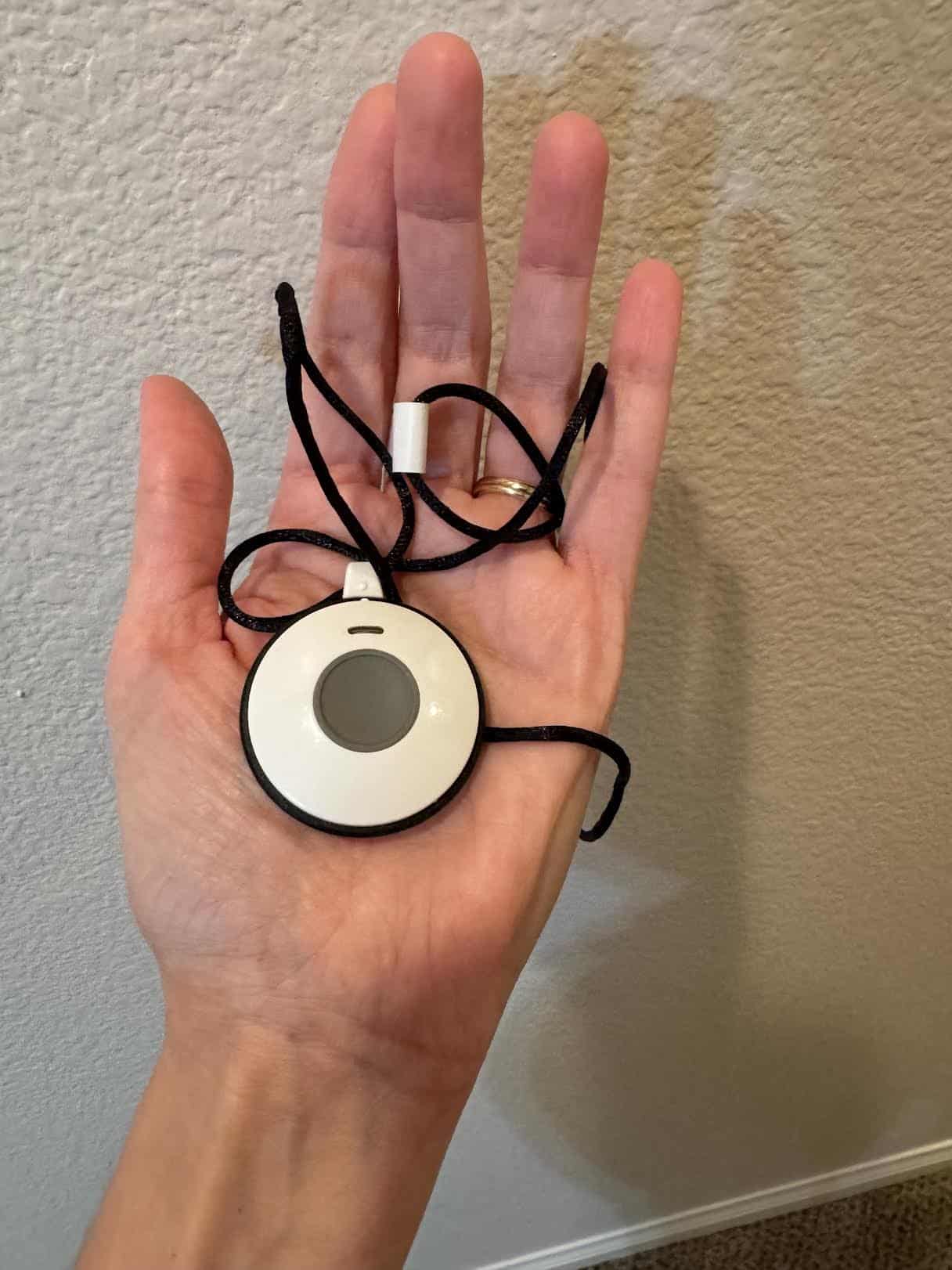
Medical alert systems come with a wearable button so users can call for help.
Most medical alert systems feature a base unit with a help button and a two-way speaker. That unit is paired with a wearable help pendant or bracelet. In an emergency, the user presses the help button on the base station or pendant. That button will call a live operator, who can send first responders or whatever help is needed. If you’re incapacitated and the operator can’t contact you, they’ll send help right away.
Do I Need a Medical Alert System?
Medical alert systems provide many benefits. They can help the wearer stay and feel safer. They also give loved ones and caregivers peace of mind. And research shows that using a medical alert system can help you remain in your own home for longer, boost your confidence in your ability to complete everyday tasks, and reduce anxiety about falling.1
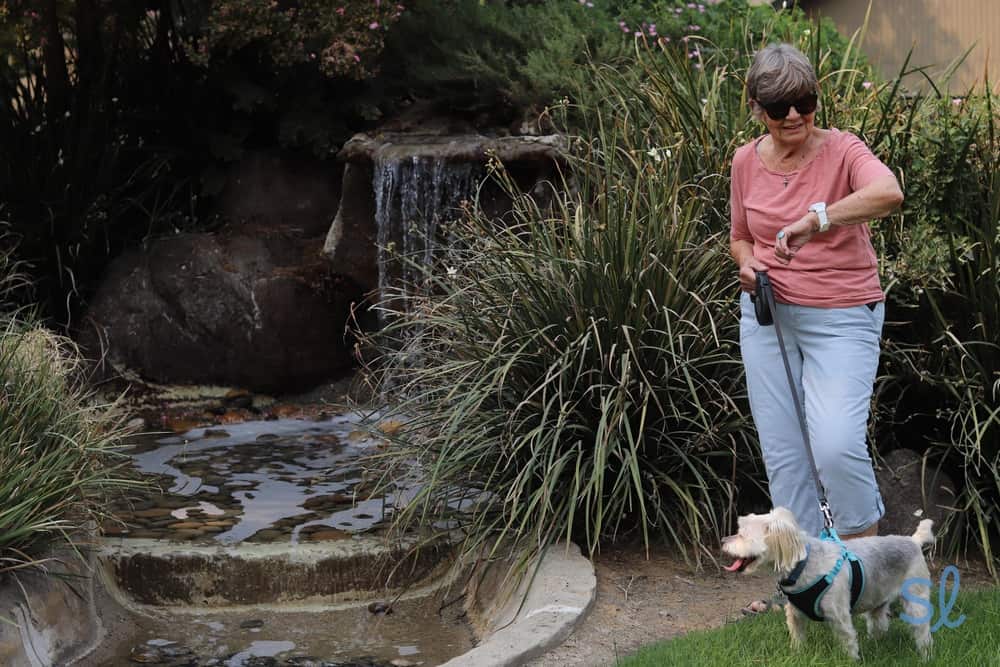
Our editor's grandma is aging in place with the help of her medical alert system
Below are some other reasons older adults might need a medical alert system:
- Falls: Falls, which affect 1 in 4 seniors every year, are the leading cause of life-threatening injuries for older adults. Over 800,000 hospitalizations occur each year because of falls.2 A medical alert system with fall detection sends help immediately after you fall. That way, you’re prepared for falls before they happen.
- Alzheimer’s or dementia: Older adults with dementia might forget to press a help button after falling. Or they might wander outside of the home. Medical alert systems with automatic fall detection and GPS tracking with caregiver alerts can really help! If the user gets lost or can’t press their help button, the response center can pinpoint their exact location and send help.
» Related Reading: Best medical alert systems for seniors with dementia
Key Medical Alert Features to Look For
As you shop for a medical alert system, keep these key features in mind:
- 24/7 monitoring: All of the best medical alert systems offer 24/7 professional monitoring from a staffed response center.
- Water-resistant equipment: Falls often happen in the bathroom. It’s essential that your equipment is water-resistant, so you can wear it in the shower.
- In-home range: In-home systems have a coverage range, which is how far away your base unit can be from your wearable help button and still connect. Coverage typically ranges from 400 to 1,400 feet depending on the system.
- Help buttons: Most systems come with a help button that can be worn as a necklace or bracelet. During an emergency, just press your help button to connect with a monitoring center. Some mobile systems have help buttons built-in, while others are separate from the mobile unit.
- Battery life: Mobile systems have battery lives that typically last from one to five days before they need a recharge. Most at-home systems plug into an outlet, and the base units have backup batteries that last around 32 hours.
- Automatic fall detection: Most medical alert providers offer fall detection pendants, which you wear instead of a normal help button. These pendants automatically detect the motion of a fall and call for help, even if you can’t press your button.
- Mobile app: Many systems offer a companion mobile app that loved ones and caregivers can use to track the system’s location, battery level, and emergency-call history.
- Health and wellness features: Mobile systems often have health and wellness features like step tracking and daily step goals. This can help users stay active as they age. Caregivers can also monitor activity and look for any abnormal patterns that could indicate a health issue.
- GPS tracking: All of the best mobile systems include GPS tracking, so first responders can quickly locate the user during an emergency. If the system has a mobile app, you can use the GPS technology to check the device’s location.
- Lockboxes: Some medical alert providers offer lockboxes for free, while others charge a one-time or monthly fee. The company’s monitoring center will send the lockbox code to first responders during an emergency. That way, they can use the key in the lockbox to easily access your home so they don’t have to break down the door.
Did You Know? According to a 2024 survey by U.S. News & World Report, 47 percent of seniors feel safer while using assistive technologies like medical alert systems.
Watch our video below to learn more about important considerations when choosing a system.

How Much Do Medical Alert Systems Cost?
The cost of a medical alert system depends on the provider, the type of system, and any add-ons that you choose. The costs can range from about $20 to $50 per month.
But the monthly fees are just part of the equation. Here are other upfront costs to consider:
- One-time equipment fees: Some systems have one-time fees for the equipment that range from around $50 to a few hundred dollars. Unique or high-tech systems like smartwatches and mobile units are the most common systems that have equipment fees. In-home systems don’t typically have equipment fees, and companies usually treat them as rentals.
- Add-on equipment and features: Fall detection, the most common add-on, costs about $10 per month from most providers. Add-ons like protection plans, jewelry accessories, lockboxes, and additional equipment range from $5 to $30 per month. In some cases, you’ll pay a one-time fee for extra equipment instead of a monthly fee.
- Activation fees: Some providers tack on extra fees for things like activation that range from around $50 to $200. These aren’t always displayed prominently, so keep your eyes peeled at checkout.
- Protection plans: Many companies offer protection plans that help cover or reduce the costs of replacement equipment if your system is lost or damaged. These can cost anywhere from $5 to $10 per month.
Money-Saving Tip: If you want to save, you might consider one of the best medical alert systems without monthly fees. Just keep in mind that these systems connect users to 911, not a 24/7 monitoring center.
Ways to Save on a Medical Alert System
There are several easy ways to save on a medical alert system:
- Quarterly or annual payment plans: Many companies, including Medical Guardian and MobileHelp, offer discounts when you pay for your system quarterly or annually instead of monthly. Discounts will vary by system and provider, but they typically break down to savings of around $3 to $7 per month.
- Seasonal discounts: Medical alert companies are known for running seasonal discounts, especially around holidays. If you don’t see any deals listed on the company’s website, give them a call. Sometimes these deals aren’t prominently displayed or are only available over the phone!
- Medicare Advantage: While Original Medicare doesn’t cover medical alert systems, Medicare Advantage (Part C) plans may cover the costs. This coverage varies by plan and carrier, so give your carrier a call to learn about your benefits.
- Flexible spending account (FSA) or health savings account (HSA): If you haven’t retired, you can use FSA funds to pay for a medical alert system. HSA funds can also be used for medical alert system costs, but just remember that you can’t contribute to your HSA if you’re enrolled in Medicare.
- Local discounts: Local non-profits like area agencies on aging may cover all or part of a medical alert system. This varies greatly by location, so it’s best to look up your local area agency on aging to learn more. The U.S. Department of Veterans Affairs or Tricare may also offer coverage.
» Related Reading: Best medical alert systems for veterans
FAQs About Medical Alert Systems
-
Which medical alert device is best?
The answer to this question will vary based on your needs. Bay Alarm Medical offers the best value, Medical Guardian has the most high-tech systems, and MobileHelp has the best devices for two users.
-
Does Medicare pay for a medical alert device?
No, Original Medicare (Part A and Part B) doesn’t cover medical alert systems. Some Medicare Advantage plans may cover them, but this varies greatly by carrier and plan.
-
Which system has the longest range?
MobileHelp offers the longest range for in-home systems — up to 1,400 feet from base unit to help button.
-
What medical alert device does AARP recommend?
AARP doesn’t endorse any medical alert systems from a particular brand. However, the company does offer a 15 percent discount on Lifeline medical alert systems for AARP members.
-
Do all medical alert systems have a monthly fee?
The best monitored medical alert systems have a monthly fee. There are some systems without monthly fees, but they don’t offer 24/7 monitoring, which is the most important feature of a medical alert system.
National Insitute on Aging (NIA). (2022). Falls and Fractures in Older Adults: Causes and Prevention.
CDC. (2024). Facts About Falls.



